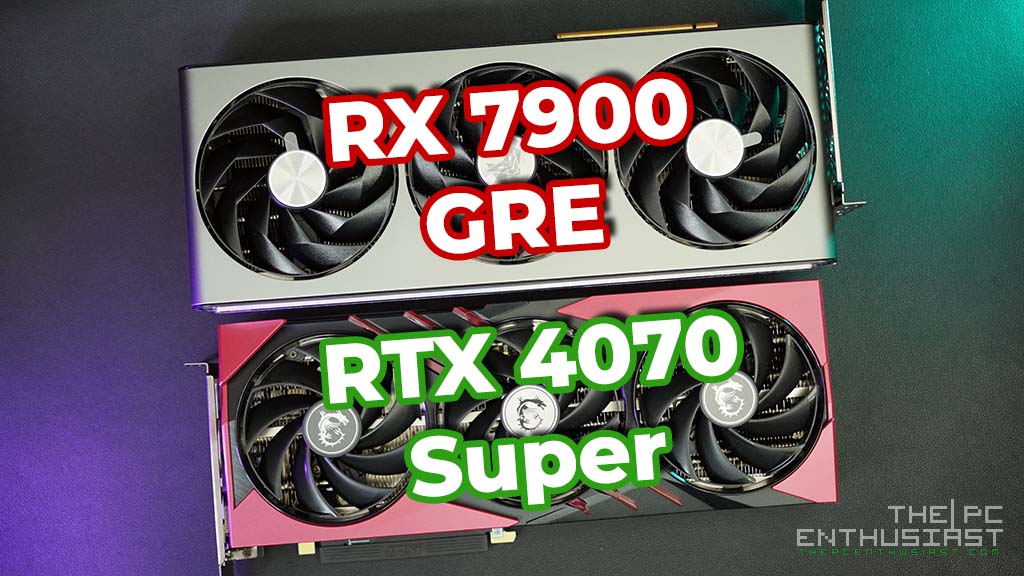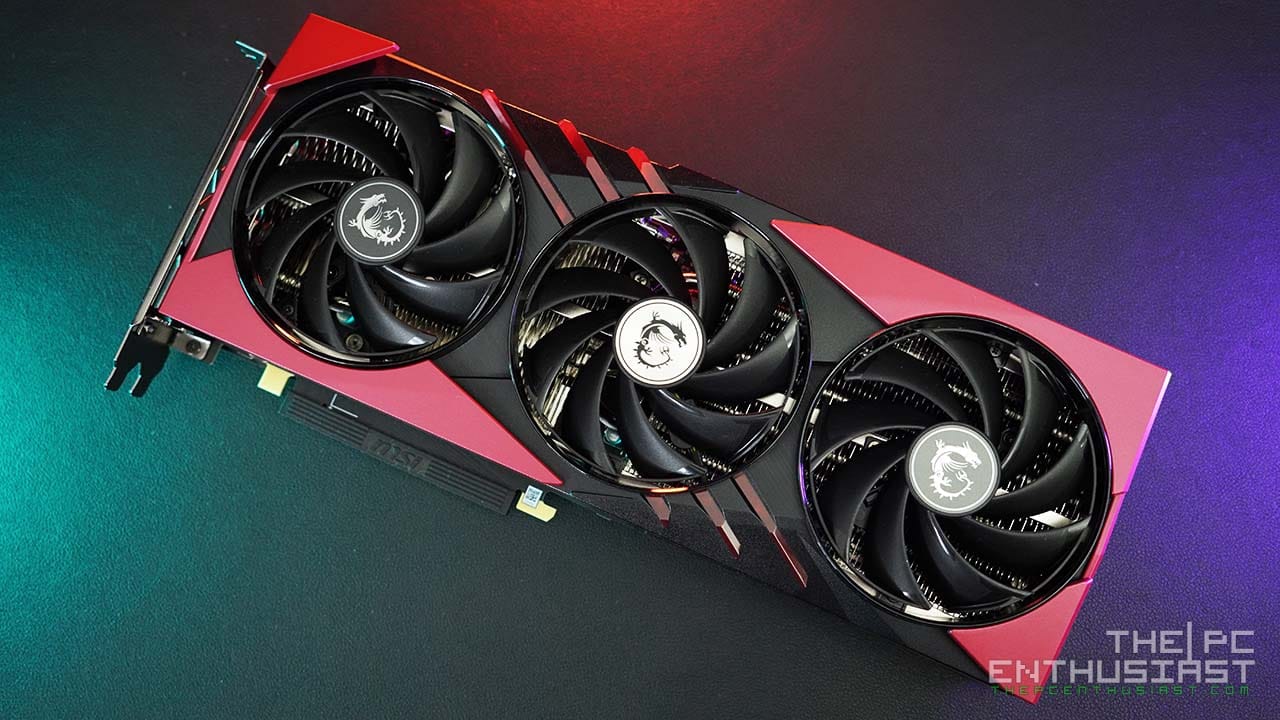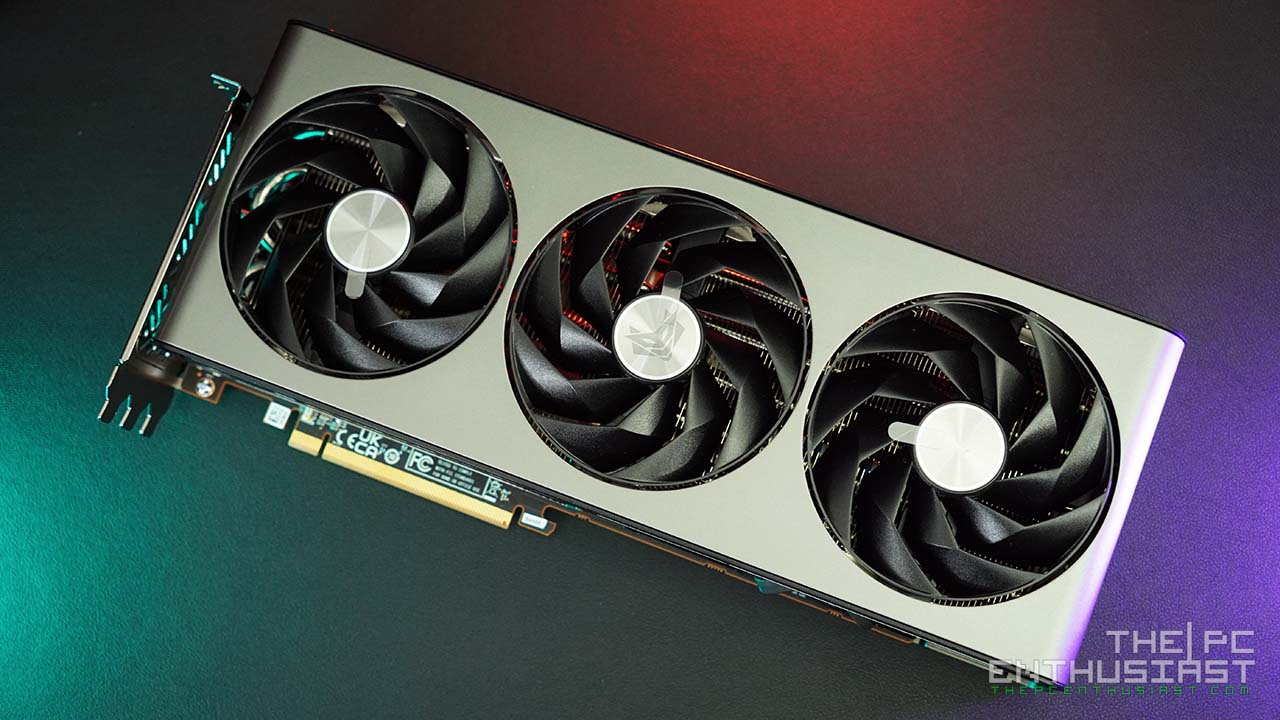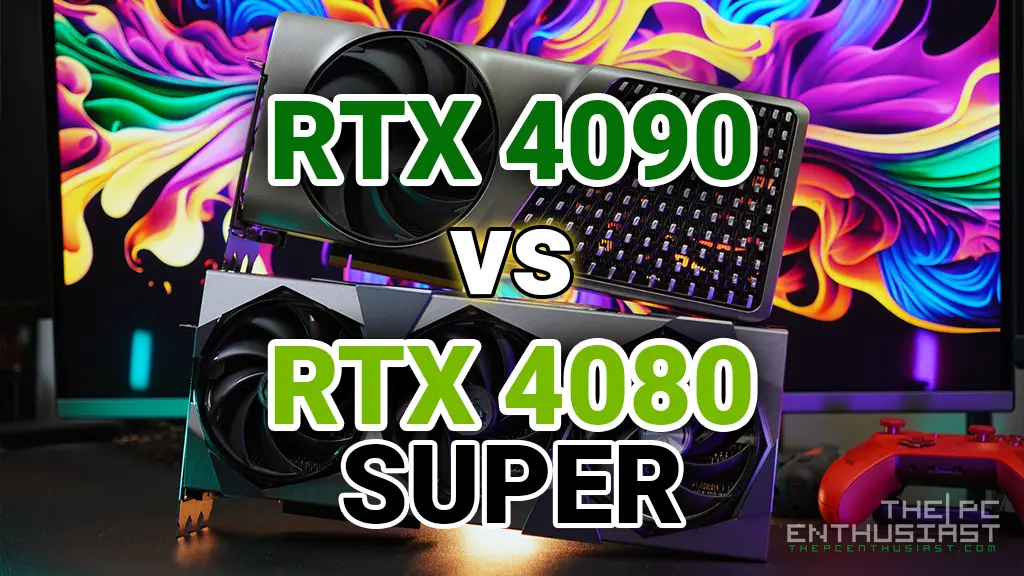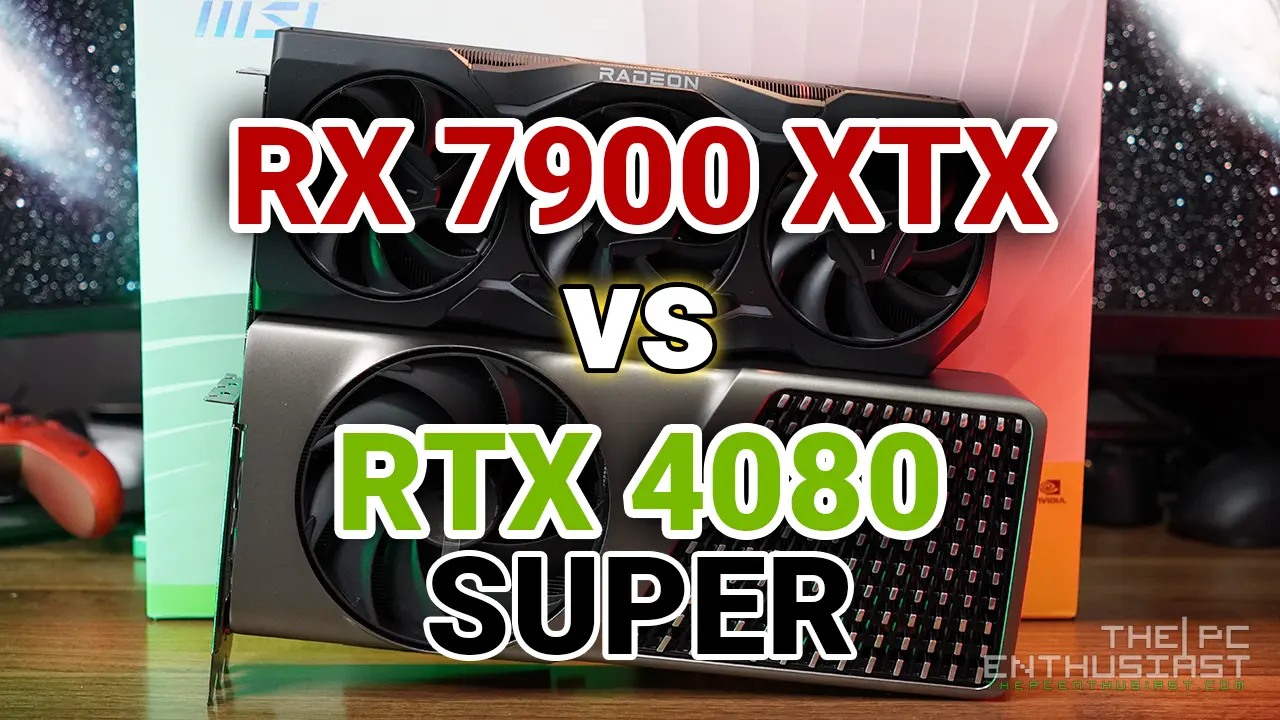Our first RTX 3080 review comes in the form of the GALAX GeForce RTX 3080 SG (Serious Gaming) graphics card. We weren’t able to get our hands on the RTX 3080 Founders Edition. Fortunately, we’ll be able to check out some of the RTX 3080 graphics cards from NVIDIA’s AIC partners. GALAX’s RTX 3080 is the first custom graphics card to arrive. This features the reference PCB and specs from NVIDIA, so let’s check out how the GALAX RTX 3080 SG performs in our review below.

- GALAX GeForce RTX 3080 SG Review
- NVIDIA GeForce RTX 30 Series Features
- NVIDIA GeForce RTX 30 Series Specifications
- Packaging and Closer Look
- GALAX RTX 3080 SG Test Setup
- GALAX GeForce RTX 3080 SG Synthetic Benchmarks
- 1920×1080 (1080p) Game Benchmarks
- 2560×1440 (1440p) Game Benchmarks
- 3840×2160 (4K UHD) Game Benchmarks
- Pricing and Availability
- GALAX GeForce RTX 3080 SG Review Conclusion
GALAX GeForce RTX 3080 SG Review
In this review, I’m not going to dive into NVIDIA’s Ampere architecture as there are already a lot of outlets covering that, with a much better depth and explanation. If you are interested in learning more about the new architecture, you can visit NVIDIA’s page here.
This review will focus more on the performance of the GALAX RTX 3080 SG and the card itself. There are some areas that I am unable to (initially) include in this review due to time constraints. For example, I haven’t fully tested its thermals and if the optional clip-on fan affects or not. However, when we were testing the graphics card, we didn’t find anything alarming about its thermals or the fan noise.
But I will be updating this review and add those data once I have fully tested the other areas or aspects related to this graphics card. If you are interested to learn more about GALAX’s new RTX 30 series cards in general, you can check out our article here.
With the release of NVIDIA’s RTX 30 series GPUs, GALAX is introducing a new series in their graphics card lineup. The new series is called “Serious Gaming”. First, I thought this was their higher-tier model due to the word “Serious”. Well, it turns out that this is the cheaper graphics card variant, and sits just below GALAX’s EX Gamer series.
According to the company, the GALAX RTX 3080 SG features a reference PCCB design and the clock speeds are similar to the RTX 3080 Founders Editions. The only difference is, NVIDIA’s Founders Edition doesn’t feature a reference PCB. It’s a custom-designed PCB, but with reference clock speeds.
GALAX’s EX Gamer series, on the other hand, features a slightly higher clock speed and a different cooler shroud design. I’m just not sure if the PCB used on the RTX 3080 EX Gamer series is a reference PCB as well or a custom one.
Now the GALAX RTX 3080 SG features 8704 CUDA cores and 10GB of GDDR6X memory. That’s a standard in all GeForce RTX 3080 graphics cards in the market. The difference lies in the clock speed and the most obvious one – their respective cooler design.
In this case, the GALAX RTX 3080 SG has a boost clock speed of 1710MHZ, which is similar to the Founders Edition’s boost clock speed. It’s memory speed if 19Gbps, with a 720 GB/s memory bandwidth running on a 320-bit memory interface.
Below are the “cutting-edge” technologies that the new RTX 30 Series GPUs and NVIDIA Ampere architecture have to offer. I’ve also included the specs of the RTX 30 series card. After that, let’s take a closer look at the RTX 3080 SG and discuss more of its features.
NVIDIA GeForce RTX 30 Series Features
- New streaming multiprocessors: The building block for the world’s fastest, most efficient GPU, delivering 2x the FP32 throughput of the previous generation, and 30 Shader-TFLOPS of processing power.
- Second-gen RT Cores: New dedicated RT Cores deliver 2x the throughput of the previous generation, plus concurrent ray tracing and shading and compute, with 58 RT-TFLOPS of processing power.
- Third-gen Tensor Cores: New dedicated Tensor Cores, with up to 2x the throughput of the previous generation, making it faster and more efficient to run AI-powered technologies, like NVIDIA DLSS, and 238 Tensor-TFLOPS of processing power.
- NVIDIA RTX IO: Enables rapid GPU-based loading and game asset decompression, accelerating input/output performance by up to 100x compared with hard drives and traditional storage APIs. In conjunction with Microsoft’s new DirectStorage for Windows API,(1) RTX IO offloads dozens of CPU cores’ worth of work to the RTX GPU, improving frame rates and enabling near-instantaneous game loading.
- NVIDIA Broadcast for AI-powered Video and Voice: Turn any room into a home studio with AI-taking your livestreams and video chats to the next level with AI-powered audio and video effects like noise removal, virtual background, and webcam auto frame.
- World’s fastest graphics memory: NVIDIA has worked with Micron to create the world’s fastest discrete graphics memory for the RTX 30 Series, GDDR6X.(2) It provides data speeds of close to 1TB/s system memory bandwidth for graphics card applications, maximizing game and app performance.
- Next-gen process technology: New 8N NVIDIA custom process from Samsung, which allows for higher transistor density and more efficiency.
NVIDIA GeForce RTX 30 Series Specifications
| RTX 3090 | RTX 3080 | RTX 3070 | RTX 2080 Ti | RTX 2080 | |
|---|---|---|---|---|---|
| Fab Process | 8nm Samsung | 8nm Samsung | 8nm Samsung | 12nm TSMC | 12nm TSMC |
| Architecture | Ampere | Ampere | Ampere | Turing | Turing |
| CUDA Cores | 10496 | 8704 | 5888 | 4352 | 2944 |
| Base Clock | 1400 MHz | 1440 MHz | 1500 MHz | 1350 MHz | 1515 MHz |
| Boost Clock | 1700 MHz | 1710 MHz | 1730 MHz | 1545 MHZ 1635 MHz (FE) | 1710 MHz 1800 MHz (FE) |
| Memory Size | 24GB | 10GB | 8GB | 11GB | 8GB |
| Memory Type | GDDR6X | GDDR6X | GDDR6 | GDDR6 | GDDR6 |
| Memory Clock | 19.5 Gbps | 19 Gbps | 16 Gbps | 14 Gbps | 14 Gbps |
| Memory Bandwidth | 936.2 GB/s | 760.3 GB/s | 448.0 GB/s | 616 GB/s | 448 GB/s |
| Memory Interface | 384-bit | 320-bit | 256-bit | 352-bit | 256-bit |
| Max. GPU Temp. | 93° | 93° | 93° | 89° | 88° |
| Power Connectors | 2x 8-pin | 2x 8-pin | 8-pin | 8+8 pin | 6+8 pin |
| Graphics Card Power | 350W | 320W | 220W | 260W (FE) | 225W (FE) |
| Recommended PSU | 750W | 750W | 650W | 650W | 650W |
| Price | $1,499 | $699 | $499 | $999 (reference) $1,199 (FE) | $799 (reference) $699 (FE) |
Packaging and Closer Look

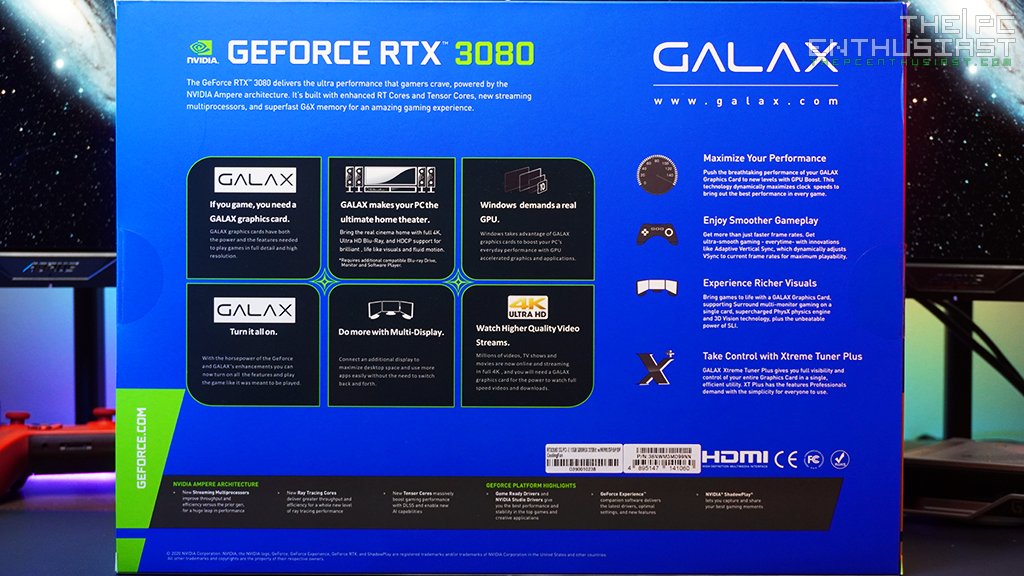
When we opened the shipping box, I was quite surprised to see a “blue box” with the NVIDIA-green accent. It was quite refreshing to see a different theme color for an NVIDIA graphics card. The packaging is quite nice as you can see from the photos above.
The packaging comes with a couple of accessories includes reading materials a manual on how to install the accessories. It’s nice that GALAX included an anti-sag bracket made of acrylic and has RGB lighting on it. You don’t have to worry about finding an aftermarket solution if ever you need one. Although, I didn’t find the need to attach it, since the card wasn’t sagging on our test system. Well if ever you do need it, it’s there.


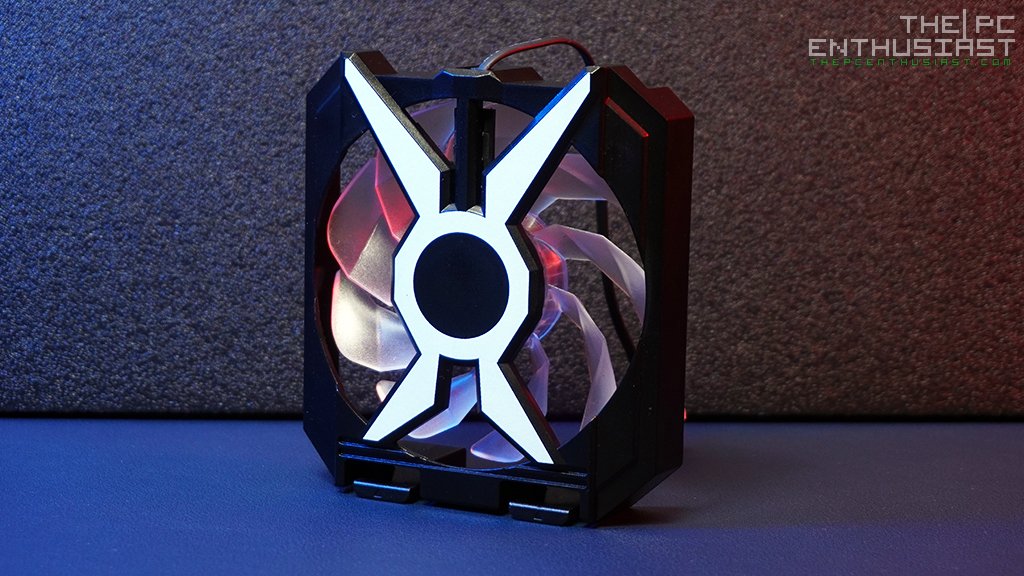

Another interesting accessory is the 1-clip booster fan. This is completely optional and you don’t need to install it if you don’t want to. The 1-clip booster is an 80mm fan that pulls air from the rear portion of the heatsink. Like I said earlier, I haven’t tested this part yet. But I don’t think it would hurt the performance of the graphics card without it.
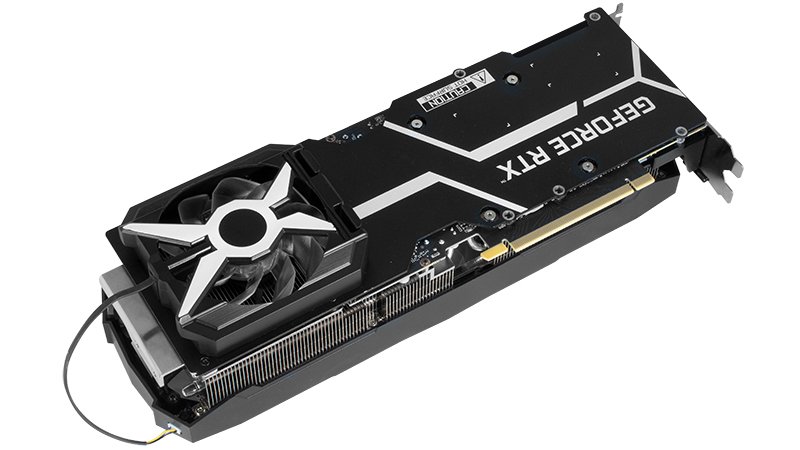

What this fan would hurt though is the aesthetics of the system. While included anti-sag bracket will add to the looks of your system, I think this one wouldn’t be that pleasant to look at. Not sure why GALAX decided to include this feature though.
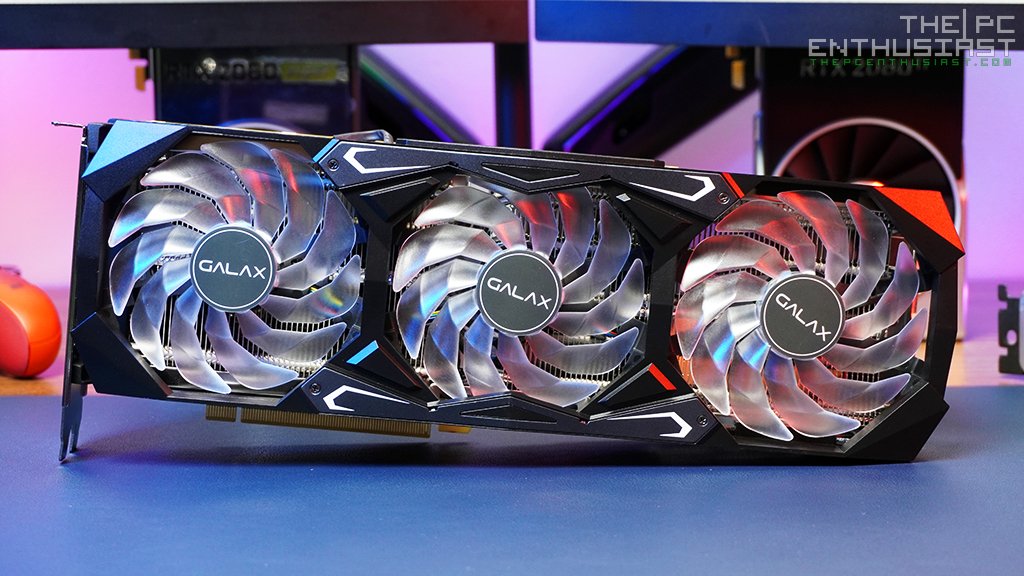

Above you can see the front and back view of the graphics card. The three 92mm fans with “Wings” fan blades are the same fans we saw on the GALAX RTX 2080 Super WTF. It doesn’t look much when it’s idle, but the unique angle or curves of those fans add an effect when the fans are spinning.
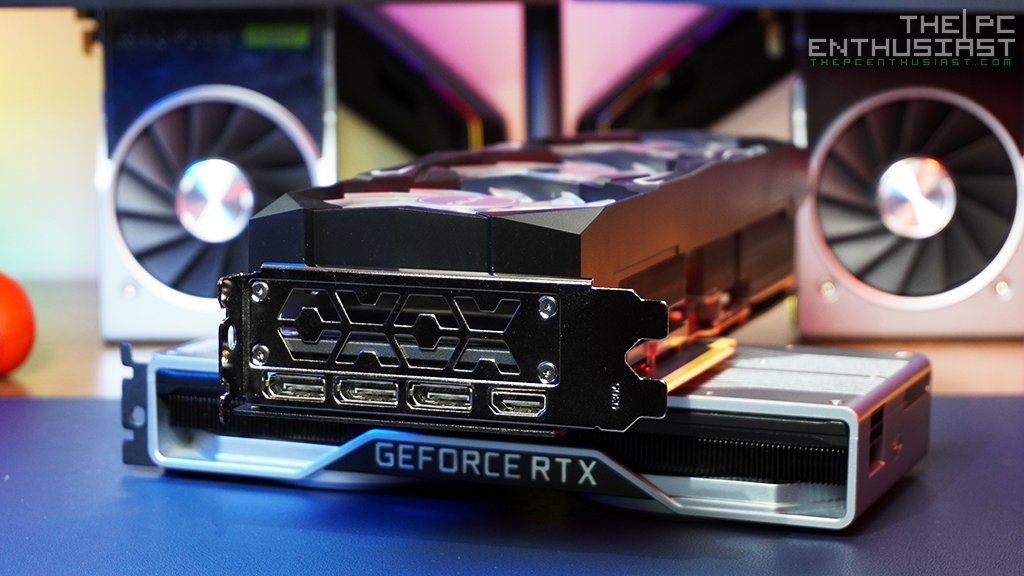
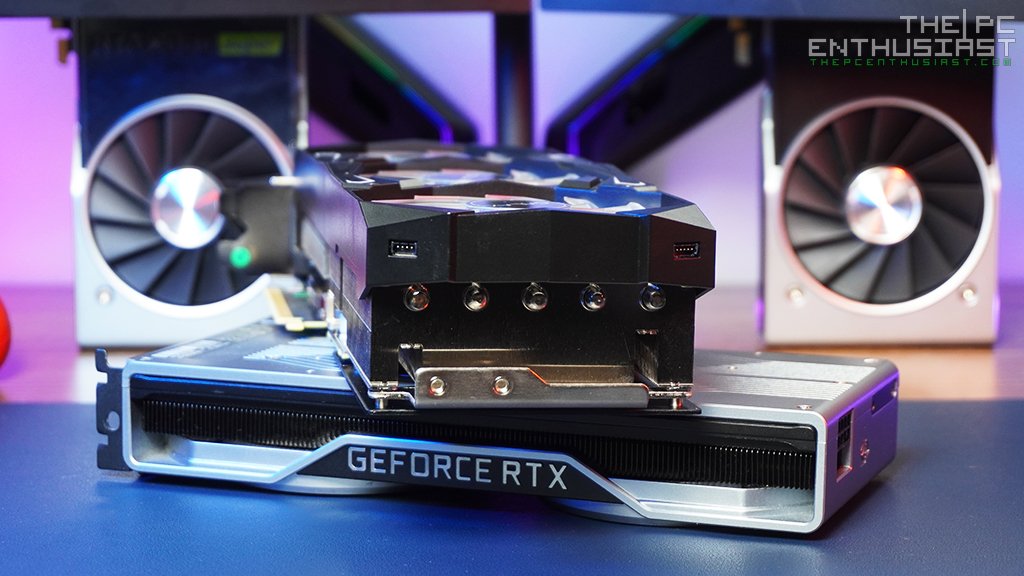
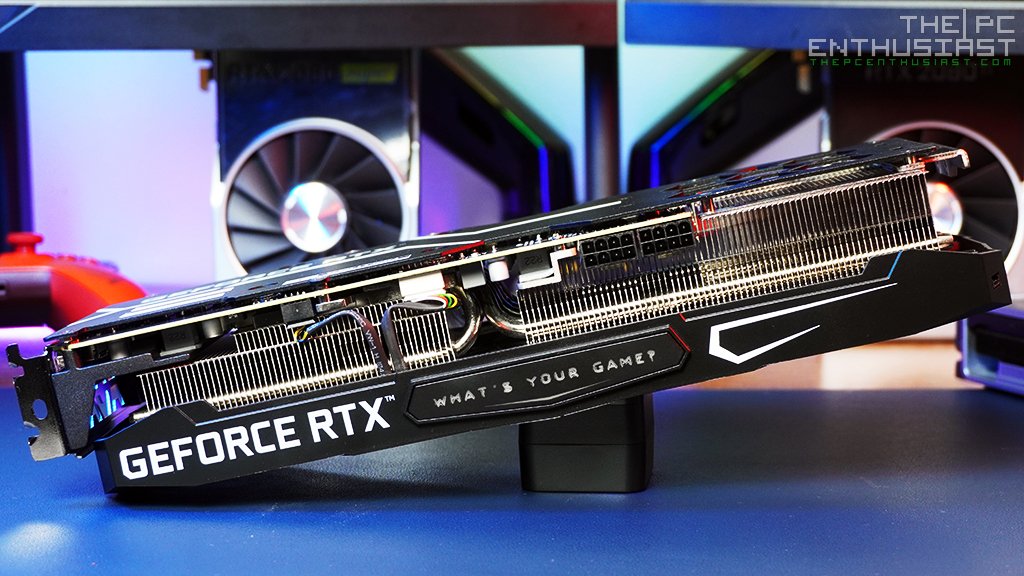
The GALAX RTX 3080 SG has four output ports. It has one HDMI 2.1 and three DisplayPort 1.4a. Looking at the rear-end portion of the card, you can see two headers. I think one is for the anti-sag bracket and the other is for the clip booster fan.
Looking at the front-side portion, you can see two 8-pin PCIE power connectors. And unfortunately, like most of the RTX 3080 cards in the market, they have shorter PCBs. As a result, the PCIe power connectors are somewhat near the center portion of the card.

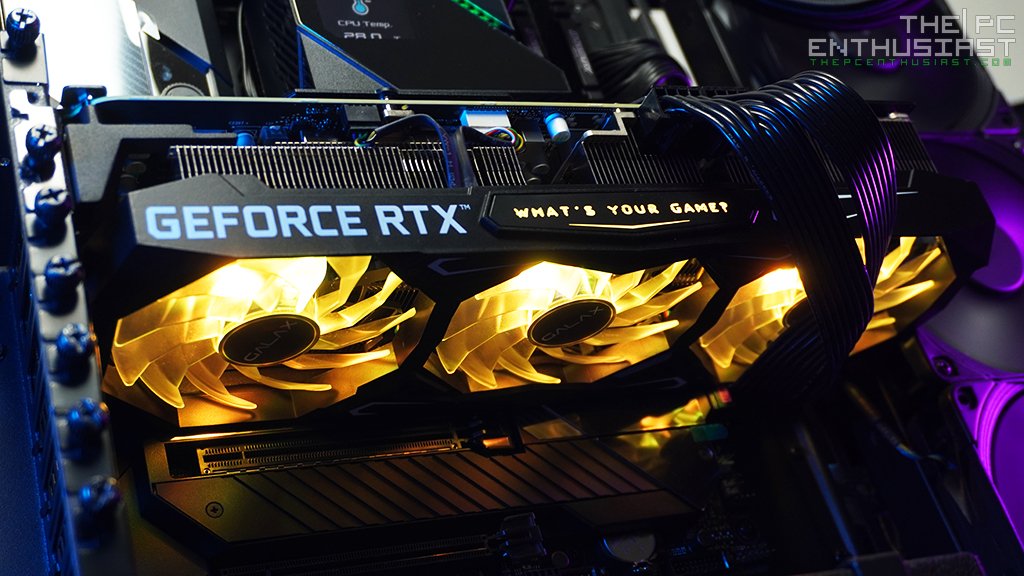
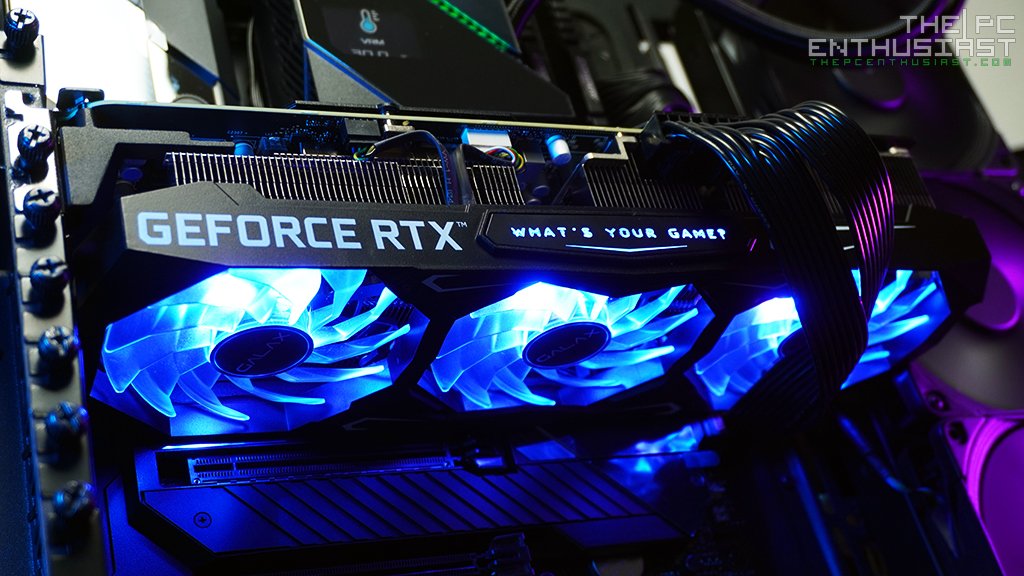
The RGB fans on the RTX 3080 SG are fully addressable and you can control them using GALAX’s Xtreme Tuner utility. And yes, you can do rainbow effect on it as well. We haven’t installed the utility while benchmarking the graphics card. That’s why what you see on the photos above are just default effects; just a simple color shift effect.
Now let’s see what kind of performance do we get with NVIDIA’s new flagship RTX 3080 GPU.
GALAX RTX 3080 SG Test Setup
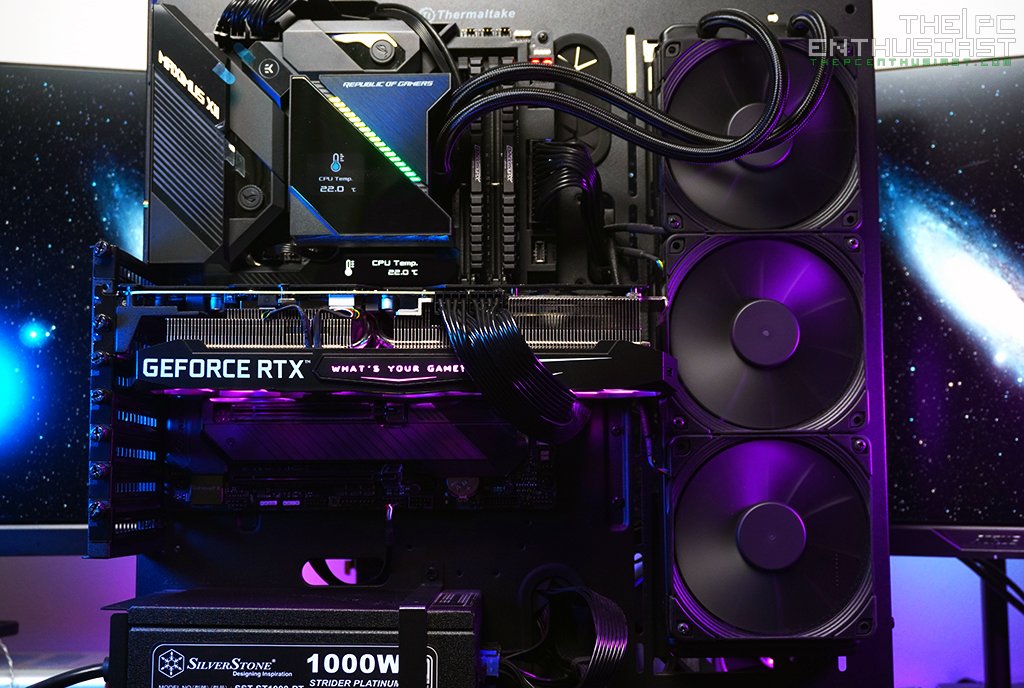
We are now using a new test system for our reviews. The Z390 with Intel Core i7-8700K is just now a backup system. For our graphics card reviews, we will be using a Z490 motherboard powered with an Intel Core i7-10700K. We also paired it with a DDR4-4000 memory. Below are the rest of the specifications of the system:
| Operating System | Windows 10 Pro 64bit version 2004 |
| Processor | Intel Core i7-10700K |
| Motherboard | Asus ROG Maximus XII Formula |
| Memory | Crucial Ballistix Elite 16GB DDR4-4000 CL18 |
| Graphics Card | GALAX GeForce RTX 3080 SG |
| OS Drive | Crucial P1 1TB NVMe SSD |
| Game Drive | Crucial MX500 2TB SSD, Kingston KC600 1TB SSD |
| Power Supply | Silverstone ST1000-PT |
| Chassis | Thermaltake Core P3 |
We used the driver that NVIDIA used for the RTX 3080 reviews. It’s NVIDIA driver version 456.16. This isn’t available publicly. But I will test these graphics cards again once NVIDIA releases newer Game Ready drivers. F1 2019 was crashing with this driver and I’m getting questionable results in some games.
For synthetic benchmarks, I used 3DMark’s benchmark suite. I also used the following games to test the graphics card: Assassin’s Creed Odyssey, Deus Ex: Mankind Divided, Gears 5, Ghost Recon: Wildlands, Horizon Zero Dawn, Monster Hunter World, Shadow of the Tomb Raider, and The Division 2.
Below are the GPU-Z screenshots of the GALAX GeForce RTX 3080 SG.
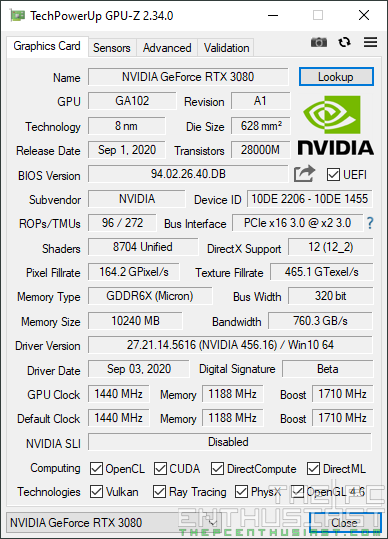
GALAX GeForce RTX 3080 SG Synthetic Benchmarks
The first stop is some synthetic benchmarks. Some of you might not be interested in synthetic benchmarks, but others would like to see them. This also gives us an idea of the general performance of this graphics card and its standing or ranking.
For the synthetic benchmark results, I include 3DMark Fire Strike, 3DMark Fire Strike Extreme, 3DMark Fire Strike Ultra, 3DMark Time Spy, 3DMark Time Spy Extreme, and Port Royal. I also included benchmarks from Unigine’s Superposition. Below are the results:
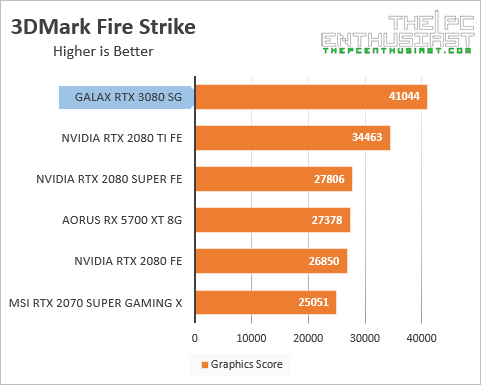

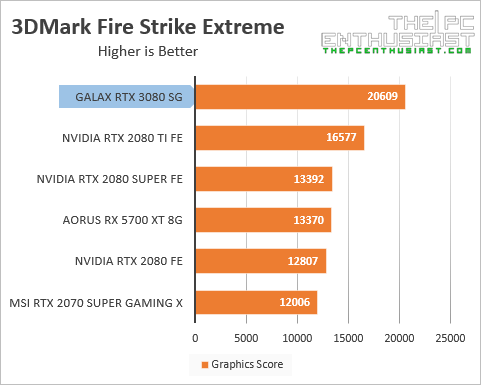
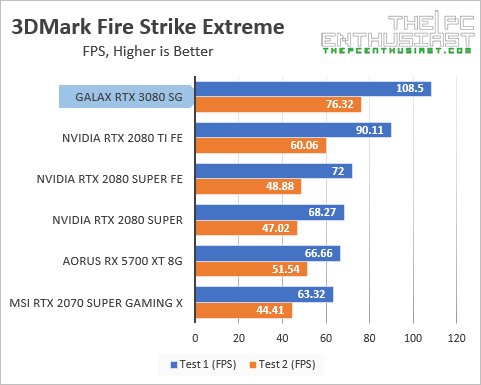
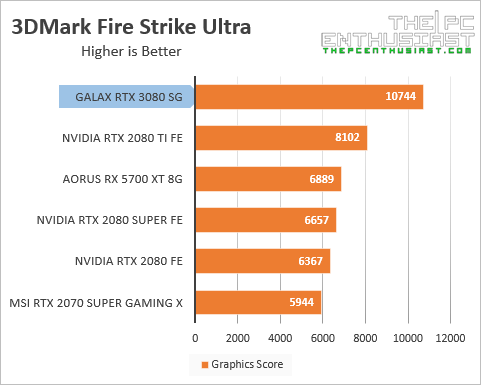

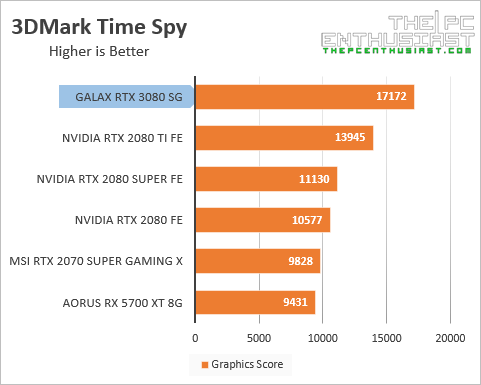
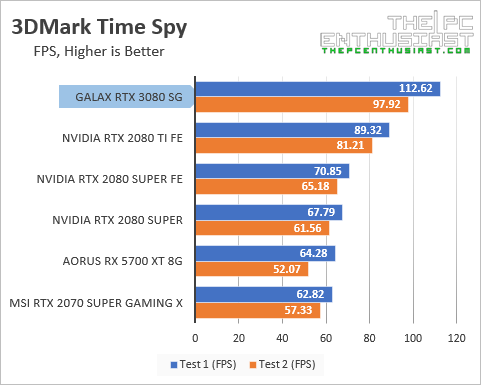
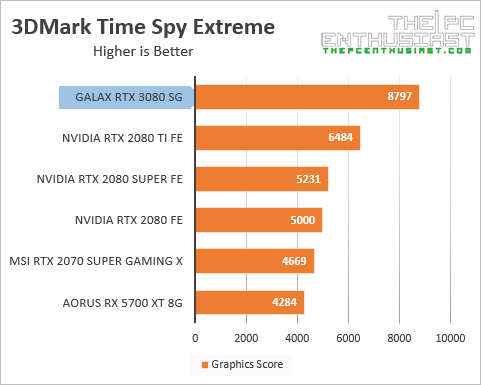
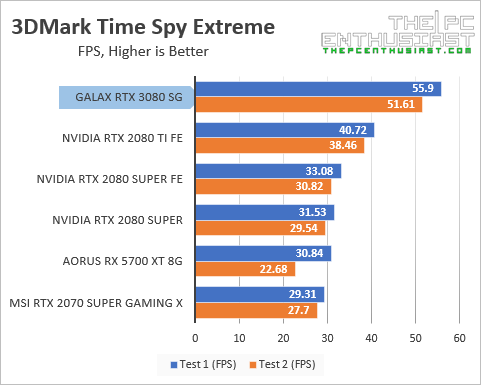
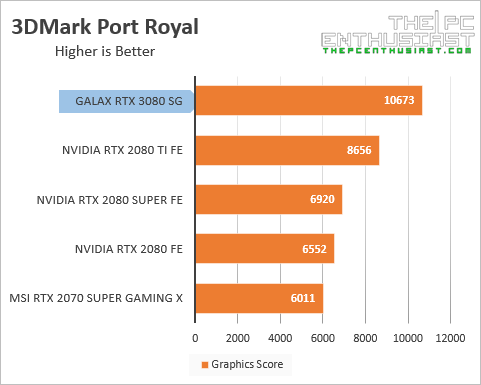



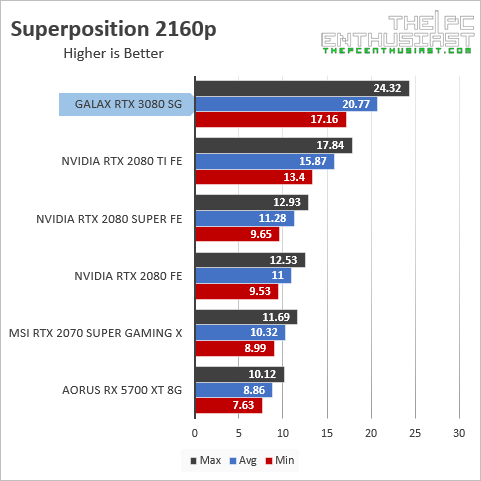
As you can see from the results above, the RTX 3080 offers a significant performance improvement from the previous generation’s flagship RTX 2080 Ti. Although, I believe that the RTX 2080 is its real predecessor or the RTX 3080.
If we compare the performance of the RTX 3080 and RTX 2080, there’s simply a huge leap. It’s near double in the Superposition benchmark and we could also see the significant jump on the 3DMark benchmark suite.
In case you missed the pricing, the RTX 2080 Ti FE is a $1,200 graphics card; and the RTX 2080 is a $700 graphics card. On the other hand, the RTX 3080 is also launching at $700 USD.
But these are just synthetic benchmarks, how about in real games. Will we still see the same pattern? Let’s find out.
1920×1080 (1080p) Game Benchmarks
The GeForce RTX 3080 is not geared towards 1080p gaming. This card is designed for higher resolution, like 4K UHD. But let’s just see what happens if we try to play games on a 1080p resolution with the RTX 3080. Below are the results:
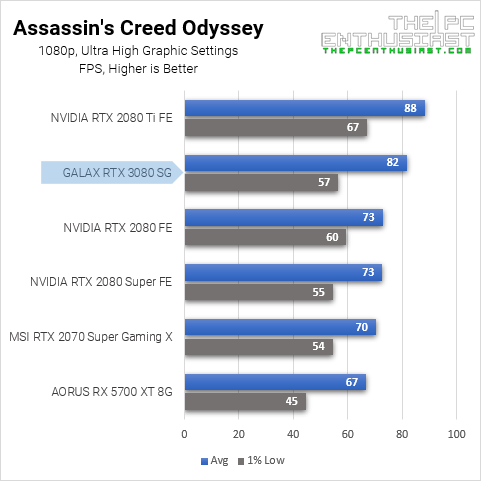
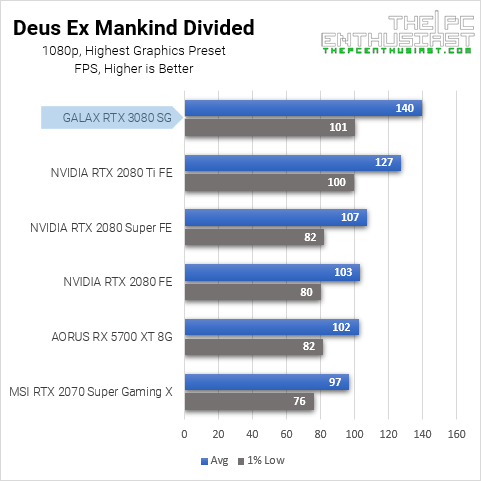
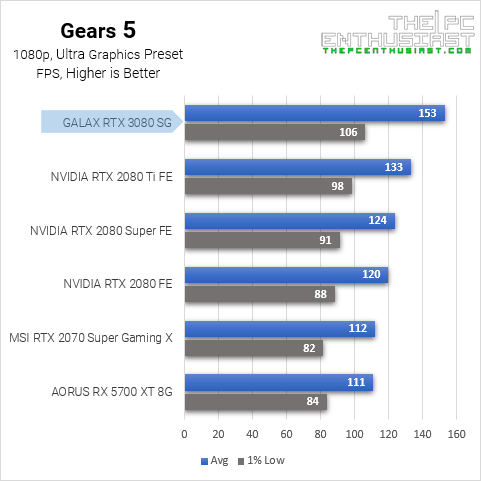
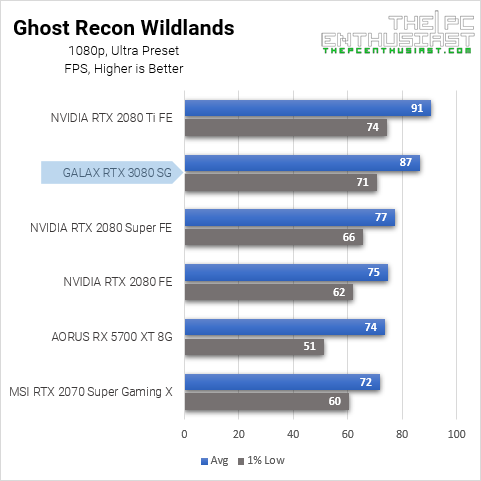
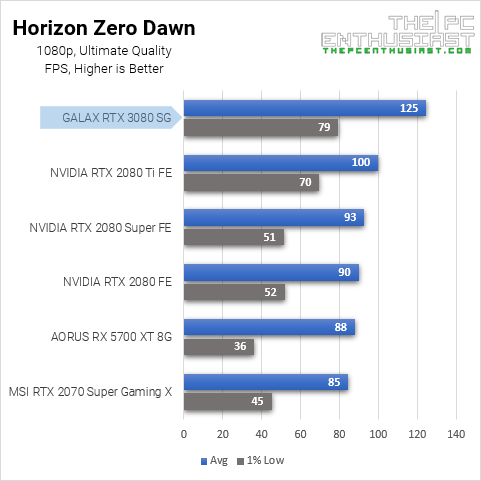
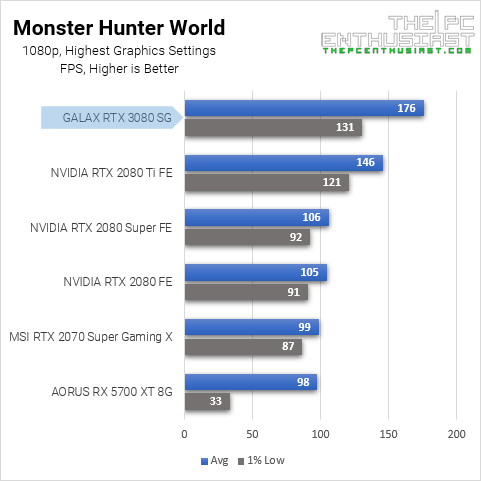
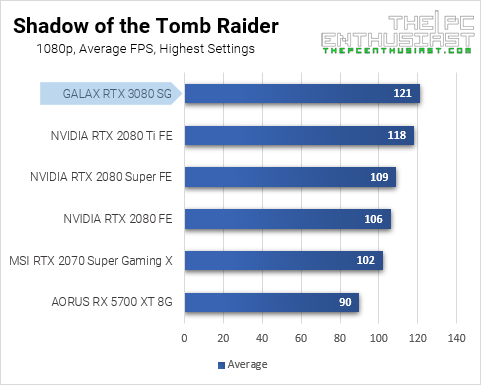

At 1080p, it doesn’t look good for the RTX 3080 in some games. As you can see, in games like Assassin’s Creed Odyssey, and Ghost Recon Wildlands, it performed slower than the RTX 2080 Ti. I’m not sure if this is a driver issue, or there’s something else going on here. But I am planning to test these again when I get more RTX 3080 and newer drivers to compare.
Let’s see it’s performance on 1440p next.
2560×1440 (1440p) Game Benchmarks
The test and the list of games are the same. The games were tested with their highest or maximum graphics quality. Below are the results:

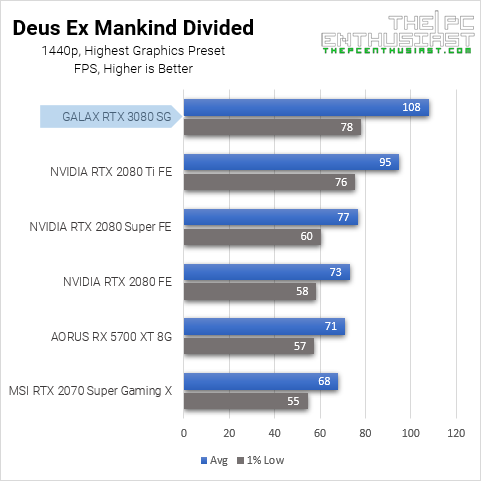



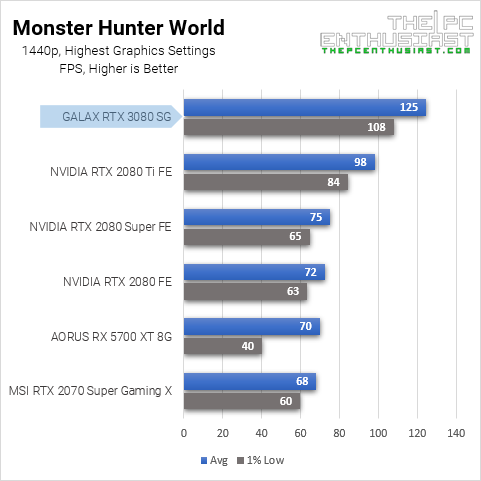

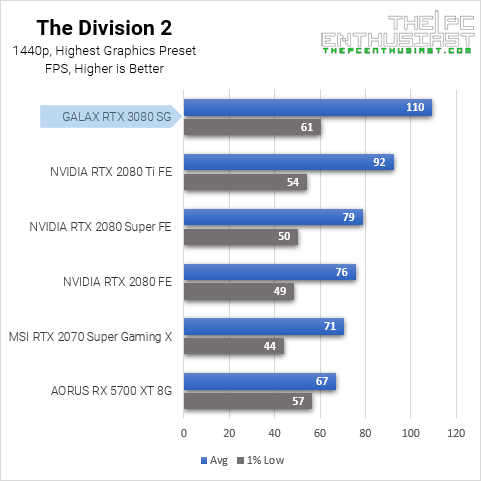
The results are a bit better now in 1440p. However, we can still see a lackluster performance in Assasin’s Creed. We ran the tests several times just to make sure the data is correct. We even uninstall and reinstall both the drivers and the card itself. The results were the same.
Nevertheless, this is a bit better compared to the 1080p results that we got. Now let’s test the RTX 3080 SG in 4K UHD.
3840×2160 (4K UHD) Game Benchmarks
4K UHD is the target resolution for the RTX 3080. Let’s find out if we can finally play games at 4K with higher frame rates. Below are the results:
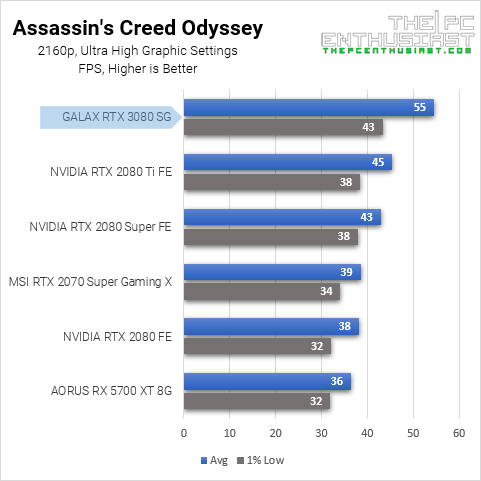
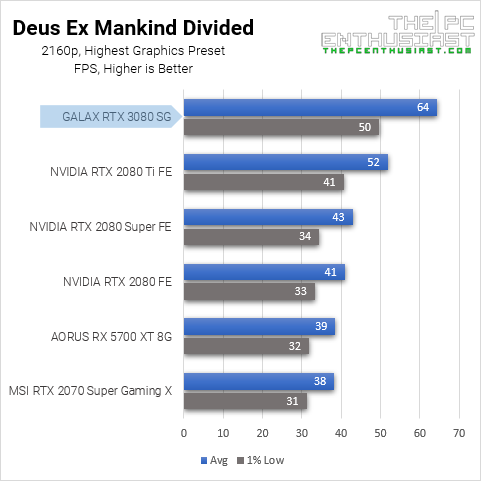
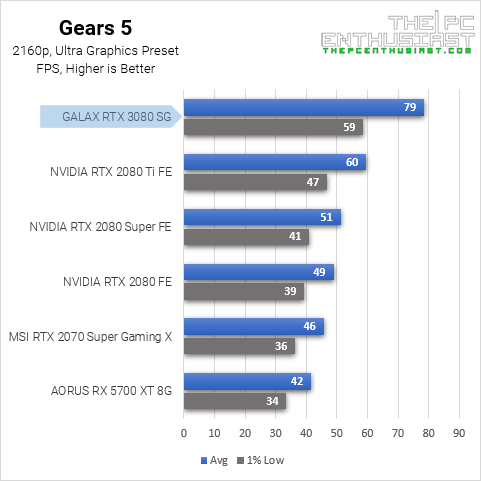
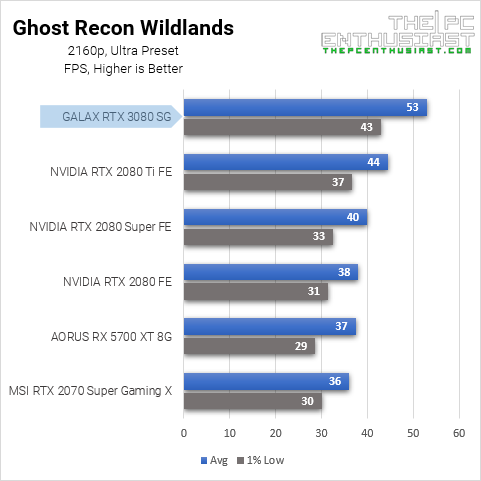

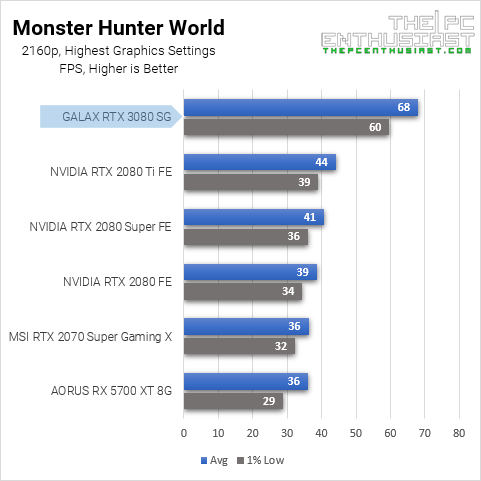


As you can see from the graphs above, we got much better results this time. The RTX 3080 performed well in 3840×2160 resolution. You can also see that the performance gap between the RTX 3080 and RTX 2080 Ti becomes wider and more noticeable.
We didn’t get the “double the performance of RTX 2080” as NVIDIA promised, but these are still significant improvements if we compare the RTX 3080 and RTX 2080.
If I have to conclude this review based on these graphs and initial testing and drivers used; don’t buy the RTX 3080 unless you are gaming on 4K UHD. Anyway, let’s do a proper wrap up of this review.

Pricing and Availability
The GeForce RTX 3080 is now available, the same time this review goes live. Well, all the RTX 3080 might have been sold out already by the time I published this review. They went out of stock, almost instantly. But expect stocks will be replenished in the following days or weeks to come.
When it comes to pricing, I don’t have an idea what’s the MSRP for the GALAX GeForce RTX 3080 SG yet. But the starting price of the RTX 3080 is $699. I’m guessing they are priced similarly, or perhaps slightly higher. I will have to confirm this with GALAX. If you are looking for the latest pricing and availability of all the RTX 3080 cards, you can check it via the link(s) below.
GALAX GeForce RTX 3080 SG Review Conclusion
Let’s talk about performance first. Yes, the performance of the RTX 3080 is quite impressive and we did see substantial improvement from the previous generation. Unfortunately, I wasn’t able to add graphics cards from the GTX 10 series, but I am pretty sure it would only make the RTX 3080 look even better.
Based on this first round of testing, I don’t think it’s a good idea to get an RTX 3080 and play at 1080p. Even if that 1080p is a high refresh rate gaming monitor. At 1440p, there was a bit of improvement but it didn’t scale up well in some games.
It was only in 4K UHD that the RTX 3080 truly shined. We saw a significant performance increase from its predecessors in 3840×2160. I think it’s good since we are now finally able to play games at 4K UHD with playable frame rates. And we didn’t even enable DLSS yet; meaning the performance would only increase in DLSS-supported titles.
My only concern is if the 10GB memory is enough, especially at 4K gaming. I’m not sure why NVIDIA limited the memory to 10GB only. They could have gone with 12GB (or more) instead. I think that the RTX 3080’s overall performance may be limited with only 10GB of memory, in some games/scenarios, or settings.
As for the GALAX GeForce RTX 3080 SG (Serious Gaming), I think it’s a great graphics card overall. It runs well and we didn’t have issues with the unit that we have. There was no coil-whine and the overall construction feels solid and sturdy.
I only have a couple of nitpicks and feedback regarding the design or aesthetics of the card. As you have seen from the photos, there are white-colored accents on the metal backplate. I would prefer they used a more muted or discrete color, like glossy black, gunmetal, or dark grey.
Also, I would have preferred to see the “GALAX” branding on the front-side instead; rather than the “What’s Your Game?”. I’m sure some would be turned off by that line. Finally, some cables are visible on the front-side area, which ruins the aesthetics a bit. Anyway, these are just my personal nitpicks. And your preference may be different from mine.
Finally, I would have given this an Editor’s choice if not for the minor cosmetic nitpick I pointed out. Nevertheless, the GALAX GeForce RTX 3080 SG is still an impressive graphics card when it comes to performance; and it can “seriously game” at 4K UHD resolution.


